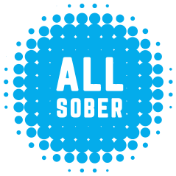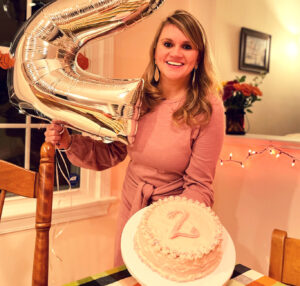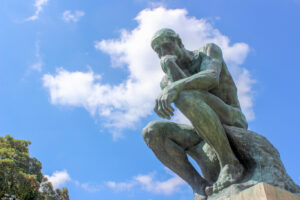Bipolar Disorder and Addiction: Recovery Is Possible
Substance use disorders frequently co-occur with this mood disorder, which impacts around 7 million American adults. But have hope: Today, both are more treatable than ever

Until quite recently, “manic depression” was seen as some exotic mental illness, sometimes assigned to particularly “unstable” celebrities. But people who deal with what is now called bipolar disorder know it can happen to anyone. And while it can significantly impede one’s life, great strides have been made in the treatment of the disorder.
It is estimated that around 2 to 3% of the American adult population, or roughly 5 to 8 million people, struggle with bipolar disorder. No longer referred to as manic depression, it is understood and treated in a much more clarified and nuanced way than in the past.
There have been other heartening developments. As with other mental health conditions, the stigma surrounding bipolar disorder has lessened. Health care providers have gained insights that allow them to diagnose bipolar disorder more clearly and accurately. Treatment options are plentiful.
But as with other mood disorders, bipolar disorder commonly co-occurs with substance use disorders (SUDs). Many individuals who are diagnosed with bipolar disorder engage in substance use to manage their symptoms. Addiction recovery for those with bipolar disorder requires comprehensive attention to both mental health conditions — but it’s very doable and very worthwhile.
Understanding bipolar disorder is the first step to finding the most appropriate treatment.
Understanding Bipolar Disorder
Bipolar disorder is a mental health condition, often severe, that impacts the ability of a person to regulate their moods. Bipolar disorder is usually diagnosed in adolescence or young adulthood and can present as mania or major depression.
Bipolar disorder is usually diagnosed in one of two categories:
- Bipolar I disorder
- Bipolar II disorder
Very generally, type I has a greater tendency for more extreme periods of mania, and type II tends to have more intense periods of extreme depression. But they share numerous symptoms to look out for. These can be categorized as those associated with episodes of mania and those associated with depressive episodes.
Symptoms of Bipolar Disorder
Here are some of the mania symptoms, or signs of what is called a manic episode:
- Feeling very elated, anxious or touchy
- Feeling “wired” or “jumpy”
- Lacking the need for sleep (or seeming to)
- Racing thoughts
- Thoughts or feelings of having unusual power or importance
- Engaging in excessive eating, drinking, substance use or sexual activity
And here are some of the symptoms to be aware of on the depressive side of bipolar disorder — signs of a depressive episode:
- Feeling very sad and anxious
- Feeling slow yet restless
- Sleeping too much or having poor sleep patterns
- Unusual forgetfulness or trouble concentrating
- Losing interest in activities that were once enjoyable
- Feeling suicidal
- Engaging in substance or alcohol use as a coping mechanism
As you can see, substance use comes up in both categories, and many people struggling with bipolar disorder are often also diagnosed with a form of SUD.
A Common Co-Occurrence: Bipolar and Substance Use Disorders
Most people who struggle with a substance use disorder do not do so simply because of the substance itself, or at least not initially. Substance use can be considered a “symptom” of a bigger problem; the substance becomes a “solution” to this problem.
This explains why many people grappling with SUDs are diagnosed with bipolar disorder after seeking addiction treatment. Once the substance is no longer masking what’s going on with the rest of the person’s emotional and mental state, a clearer diagnosis can be made.
Someone diagnosed with bipolar disorder can, of course, still deal with substance issues after that diagnosis. For someone not receiving the proper care for their bipolar disorder, substance use can feel like a short-term solution or form of relief.
The good news either way is that there have been many advancements in how bipolar disorder is treated, and they are readily available for those struggling. These include treatments tailored to those dealing with addiction as well, if needed.
How Treatment Can Help
Bipolar disorder is generally treated with a two-pronged approach.
The first aspect is clinical. This typically includes medication, some of which treats emotional dysregulation in general, and some of which treats specific symptoms of bipolar disorder. Fortunately for those with co-occurring substance use disorders, most of these medications are non–habit forming.
The second prong of this approach is therapy. Cognitive behavioral therapy (CBT) can be especially helpful. The goal of this type of therapy is to get to the roots of what exacerbates someone’s symptoms stemming from bipolar disorder. CBT aims to give the individual tools to adjust their behavior when confronted with certain stimuli that may trigger an adverse reaction. This therapy also allows the person to see the warning signs of either a manic or depressive episode so they may seek help if needed.
Neither medication nor therapy will be very effective if the individual is still engaging in harmful substance use. When someone is also dealing with a substance use disorder, it’s treated in tandem with bipolar disorder and treatment incorporates tools of addiction recovery. These tools and resources may include detox, addiction treatment, counseling, 12-step meetings, group therapy, wellness regimens or sober housing. Each person is helped according to their needs, and no two have exactly the same situation.
The past two decades have clarified bipolar disorder tremendously: Mental health professionals have become better equipped to understand, diagnose and treat it. The upshot is that people with bipolar disorder no longer have to struggle needlessly. With proper care and treatment, you can lead the healthy, fulfilled kind of life everyone deserves. And if you’re seeking to stamp out addiction, you can achieve sobriety and recovery too.
More Help & Information
Sobriety vs. Recovery: What's the Difference?
Are the concepts themselves up for debate? Do they require certain treatments, or abstinence from everything? It's complicated! And new ways of thinking are changing the conversation.
Now Elite NFL Players, They First Tackled Addiction | News Roundup
All Sober compiles the best of the latest headlines. Here's your addiction and recovery news for the week of Feb. 19, 2024!
Help Them Help You: Explaining Your Mental Health to Your Family
Your mental health can affect — and be affected by — your loved ones. Here's how to discuss it with them so everyone can heal.
Dry January (and Beyond): The Possibilities Are Endless
There's never been a better time to go sober. Whether you're trying it out this month or already living the life, join us for some tips, ideas, inspiration — and maybe even new friends.
Sober Holiday Tips: Meeting 'Share-a-Thons'
Need to get out of the house for a bit and see some friendly sober faces? Recovery support group meeting marathons run 24/7 from Christmas Eve through New Year's Day.
What Happens After an Intervention?
Your loved one agreed to get treatment for addiction during their intervention — or not. Here's what you need to know about what comes next.
We're in This Together: Building a Healthy Sober Support Network
You are the captain of your recovery, but you don't have to do it alone. A sober support network will lift you up in tough times and celebrate your triumphs.
Real-Life Recovery Tips: Phone a Friend
When you're traveling, you can take your sober support network with you — right in your pocket. Rocker Kasim Sulton shares his top recovery tip in this video.











